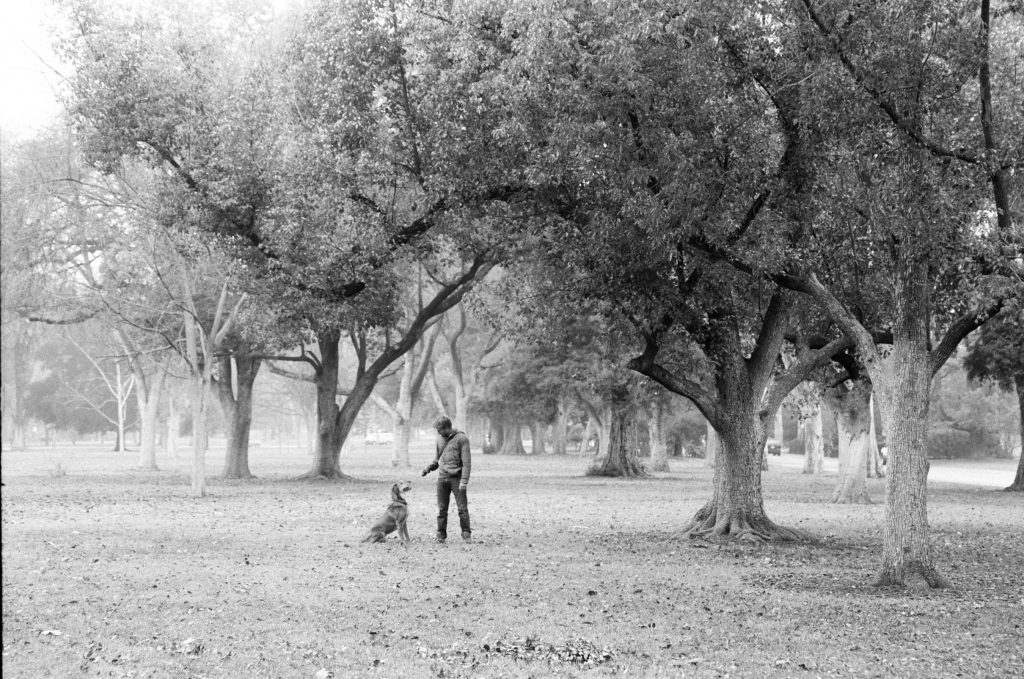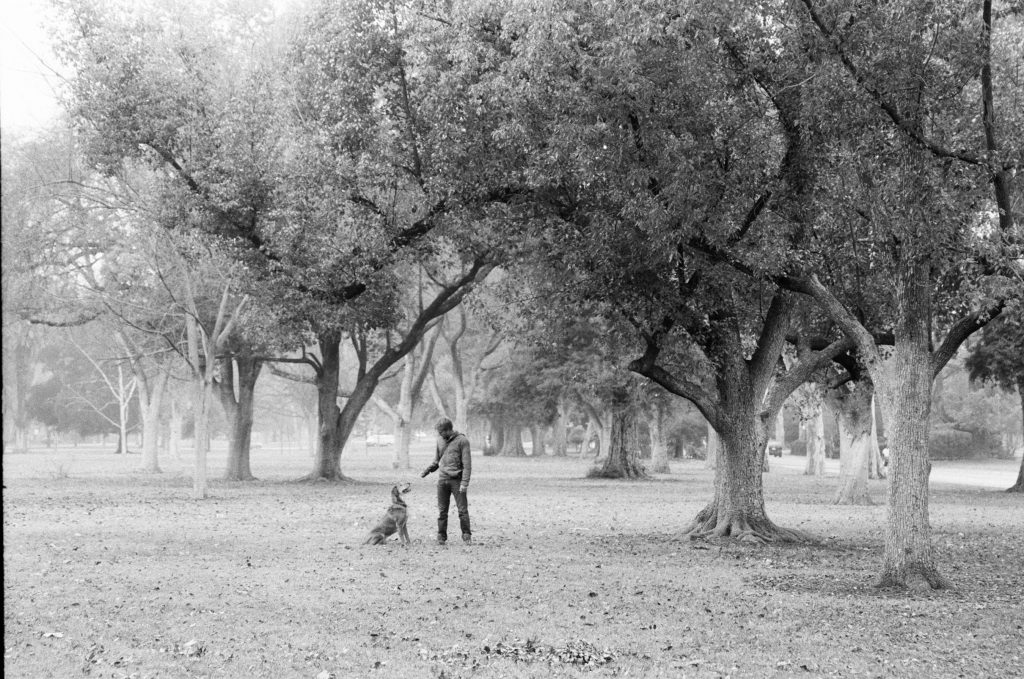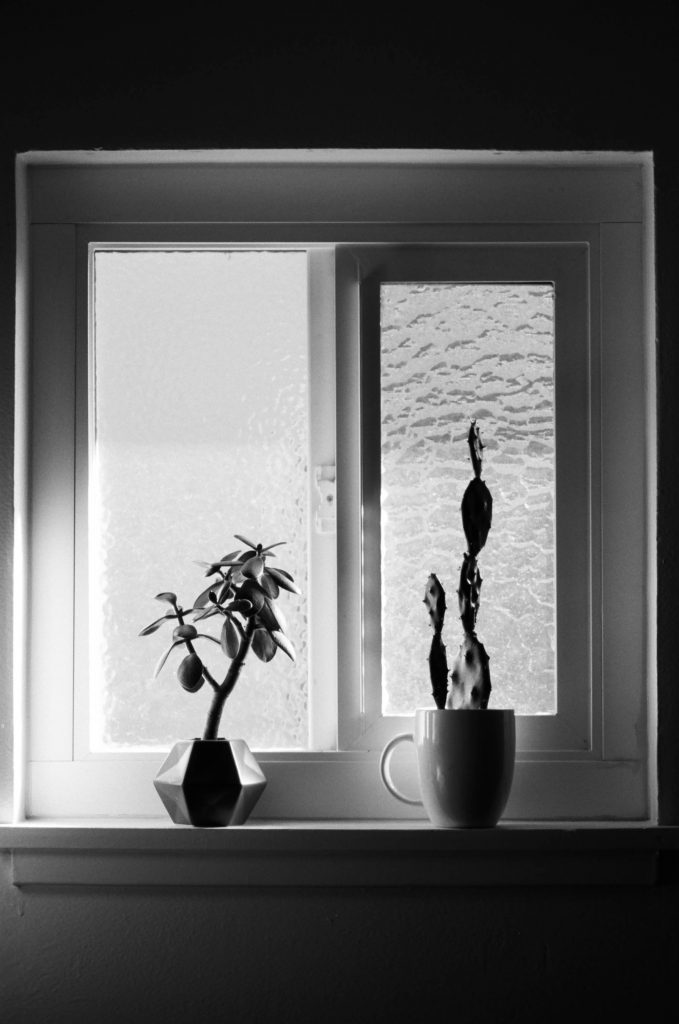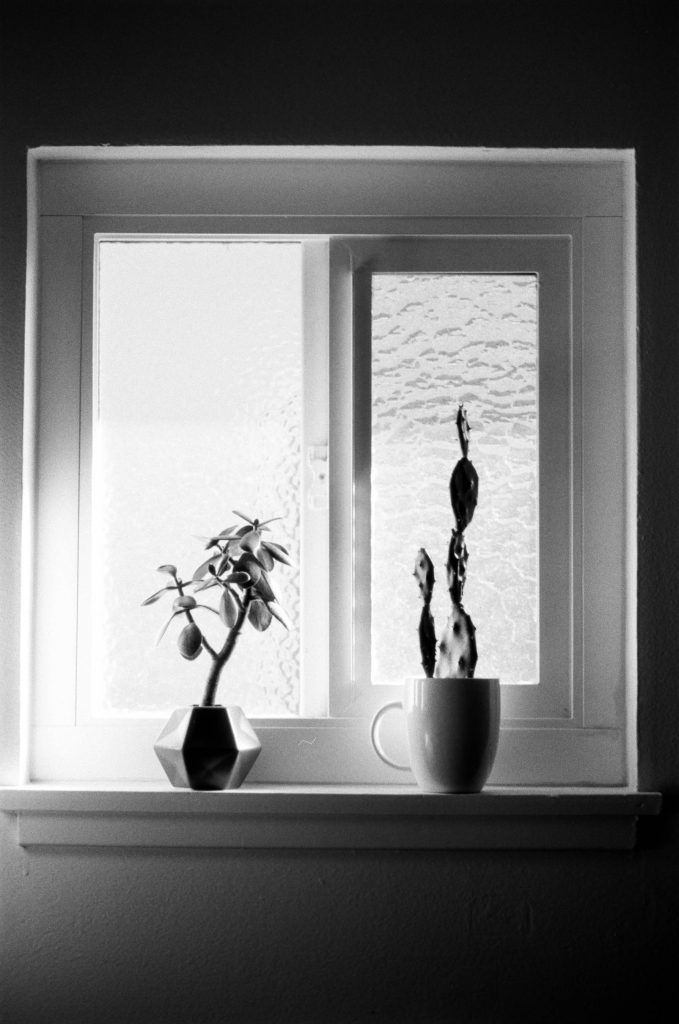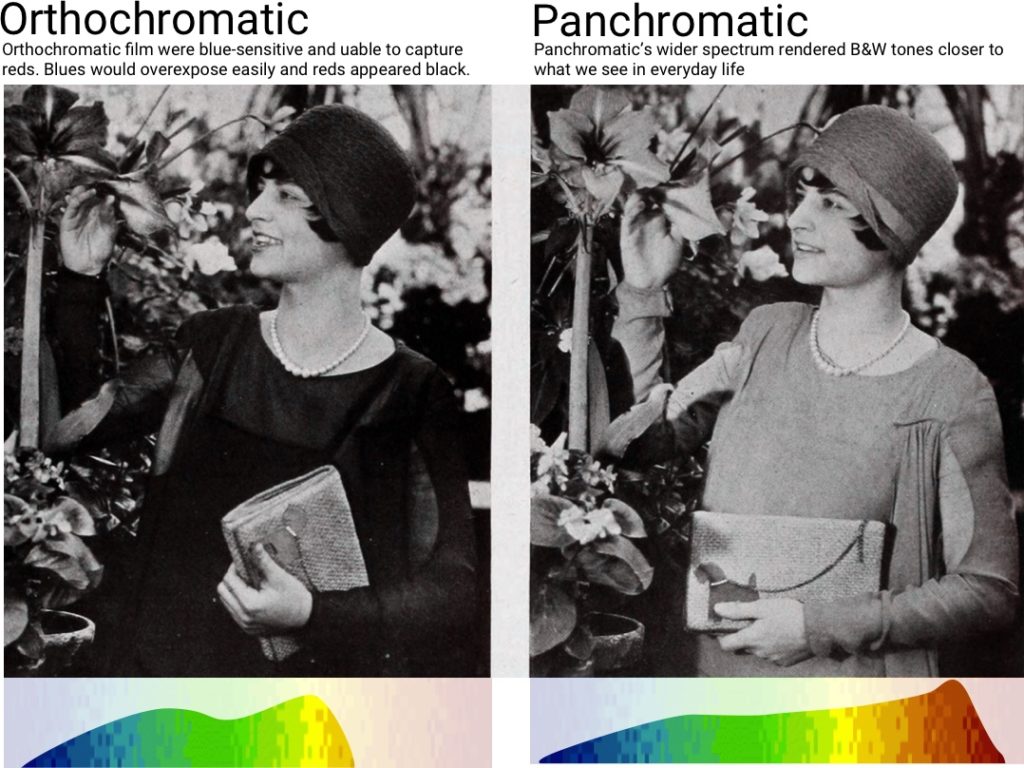Orthochromatic vs Panchromatic film – A Photo Comparison
After many requests about the difference between orthochromatic and panchromatic films, we headed out and shot a roll of Panchromatic film (Kodak TMAX 100 ) and two different orthochromatic stocks (Rollei Ortho 25 Plus & Ilford Ortho Plus 80).
Orthochromatic film is simply made with silver halide crystals, which are naturally blue-sensitive. First produced in 1873, early film photos and movies used orthochromatic film, which is the reason why skies in early photographs are almost always white: being blue, they overexposed easily. The orthochromatic film couldn’t see a red light, so anything red would turn black.
As technology and chemistry evolved, Panchromatic film was introduced around 1906 a was created with sensitizing dyes to extend the silver halide crystal sensitivity into the green and red portions of the spectrum. Panchromatic, meaning wide color, is now the popularly used film, capturing a wider spectrum of light, rending B&W tones close to what we see in everyday life.
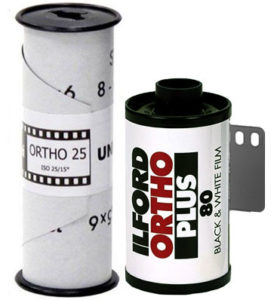 Ilford Ortho Plus 80 Ilford Ortho Plus 80 |
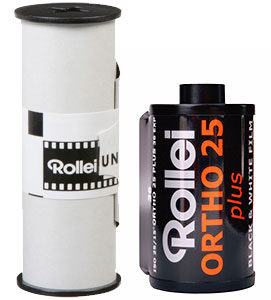 Rollei Ortho 25 Plus Rollei Ortho 25 Plus |
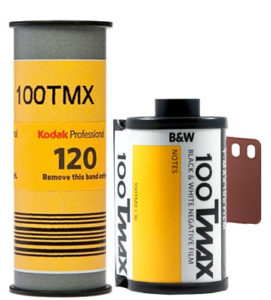 Kodak TMAX 100 |
What’s the Best Film?
The most comprehensive index of film types; characteristics, examples, and reviews.
This history of B&W film as it evolves from Orthochromatic to Panchromatic
Orthochromatic films were first produced by Hermann Wilhelm Vogel in 1873 and were blue or green-sensitive and unable to capture reds. The early movies used ortho film and were challenged by capturing actors because the warm skin tone would appear dark. Movie producers would control the gray levels by carefully selecting locations and using greasepaint makeup and powder to cover up warm skin tones, lightening up faces on ortho film.
An early German chemist Hermann Vogel found that by adding dyes to the film emulsions would widen the available spectrum into the greens and eventually to the oranges. In the 1900s, Vogel’s technique was extended to create panchromatic film, capturing the full spectrum. The switch from ortho to pano was slow due to cost and because panchromatic film, being sensitive to red light, couldn’t be developing with a red safelight, but had to be developed in total darkness.
Still photography panchromatic films and plates become available commercially in 1906. While The Darkroom will develop any type of B&W film, most B&W films available today are panchromatic. Film variations are still being introduced to capturing different wavelengths to product different contrast levels for specialized applications or to be experimental. Films designed for aerial photography into the IR spectrum can cut through the haze and enhancing the green shades in vegetation for surveys and scientific studies.



 My Account
My Account










 Gift Cards
Gift Cards Film Index
Film Index FAQ
FAQ Desktop Framed Prints
Desktop Framed Prints
